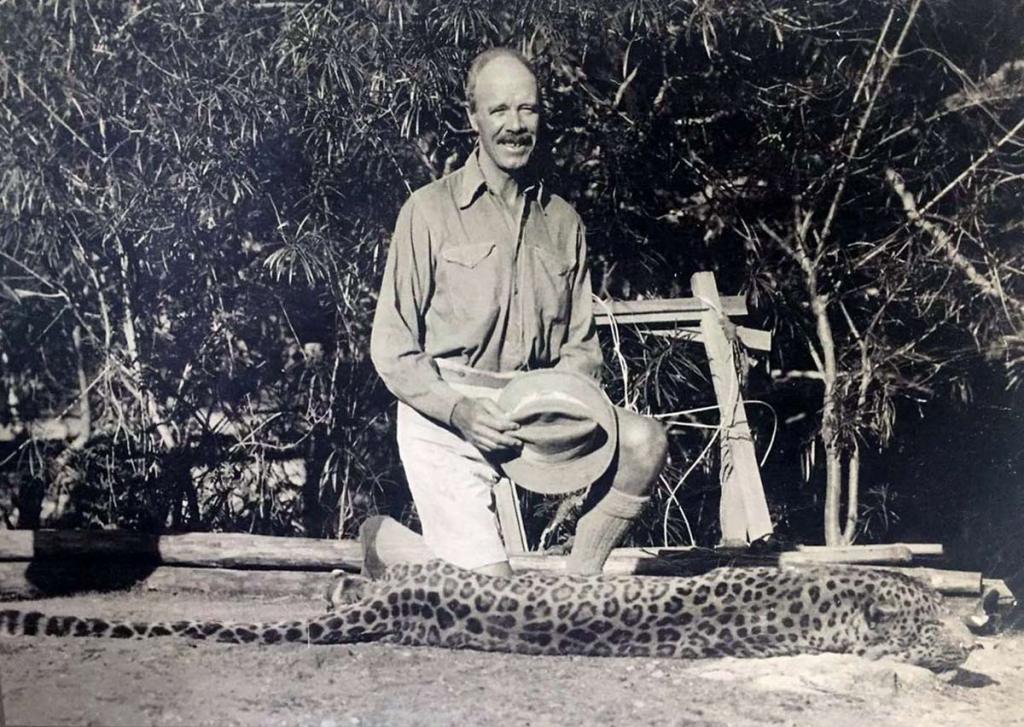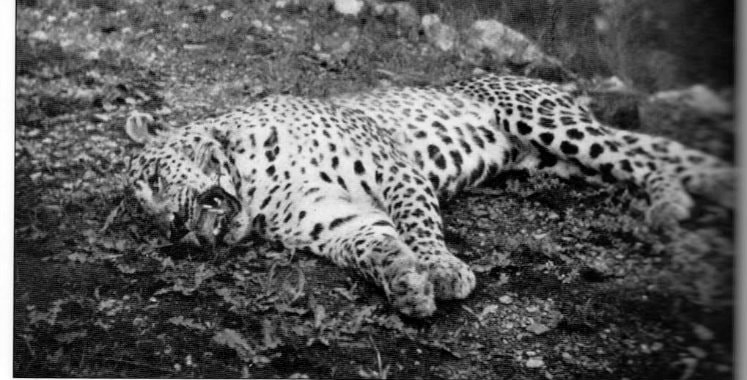With more than 400 victims, the Panar man-eater ranks second only to the Champawat Tiger as the most prolific killer of human beings in recorded history. Like the Champawat Tiger, the man-eating leopard of Panar resided in Northern India. Also like the Champawat Tiger, as well as a number of other prolific man-eaters such as the Leopard of Rudraprayag, the Panar man-eater was ultimately shot and killed by the renowned hunter Jim Corbett.
While typically less likely to become a man-eater than tigers, Indian leopards have been responsible for very large numbers of deaths. Between 1875 and 1912, there were 11,909 recorded fatal leopard attacks on the Indian subcontinent. Both Corbett and Kenneth Anderson, a fellow hunter of man-eaters, stated that hunting a leopard presents more problems than any other quarry. Leopards are more competent climbers than tigers, more elusive and better able to conceal themselves in small cover. They are also often bold enough to enter villages, and even homes, in pursuit of prey.

The Panar leopard was an adult male, and Corbett reported that it appeared to be in good health. Unlike tigers, that often turn to hunting humans due to injuries or old age that makes it more difficult to catch their typical prey, man-eating leopards are usually healthy individuals. Corbett has theorised that the Panar man-eater got a taste for human flesh after feeding on the victims of a severe cholera outbreak in the region. Similarly, the leopard of Rudraprayag began attacking people after the 1918 influenza epidemic, which killed thousands of people in India.
The Panar leopard began attacking humans in the early 20th Century, although the exact date is unknown. Over a period of a few years the leopard was responsible for hundreds of deaths. Attempts by local hunters and authorities to trap or shoot the leopard were unsuccessful. The leopard proved so elusive that it was almost never seen despite the many attacks, until it eventually grew so bold that it would enter homes and drag off victims in front of their terrified families.
During his hunt for the Champawat Tiger, word reached Corbett of a prolific man-eating leopard. He arrived in Panar in 1909. In April 1910 he was taken to meet a couple who had been attacked by the leopard the previous night. While the husband was largely uninjured, the wife had been dragged across the room by her throat and suffered severe claw wounds as her husband struggled to prevent the leopard dragging her away. The leopard had released her, but then spent the rest of the night trying to claw its way back into the home, before disappearing shortly before dawn.

The woman’s wounds had turned septic, and Corbett judged that she would die regardless of medical attention. He later wrote that he hoped nobody else would ever be subjected to the suffering of the victim of an attack where a big cat had attempted to drag them away by the throat. Corbett staked out the house and the dying woman overnight, and believed that the leopard was circling the home due to the alarm calls of jackals, but it never showed itself.
The following September, Corbett hiked 30 miles through the jungle to reach a village where four men had been killed in a recent spate of attacks. Corbett staked out two goats as bait and lay in wait with a shotgun. The leopard was able to snatch the first goat unnoticed, and three days later returned during a period of pitch blackness for the other. Unable to see, Corbett fired off a shot at the sounds of the leopard attacking the goat and appeared to wound it.
Corbett then set up a beating line of men with torches and walked with them through the brush in the direction the leopard had fled in. When the leopard appeared, the men with him dropped their torches and ran, but Corbett was able to use the light from the fallen torches to shoot the leopard dead. The Panar man-eater was the first leopard that Corbett hunted and killed, before he did the same with the leopard of Rudraprayag 16 years later. While the Panar man-eater was responsible for many more deaths than the leopard of Rudraprayag, the latter hunt received more coverage in both Indian and British press and is by far the better known of Corbett’s two leopard hunts.

In later life, Corbett renounced hunting, and instead used the skills he had developed to become a wildlife photographer and cameraman. He played a key role in establishing India’s first national park, which was renamed the Jim Corbett National Park shortly after his death in 1955.

Thanks for the story. That’s why I prefer cheetahS to leopards.
LikeLike